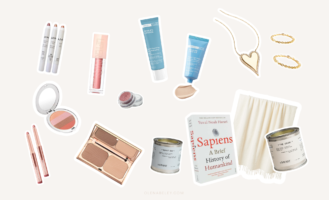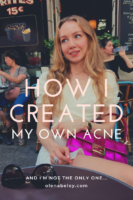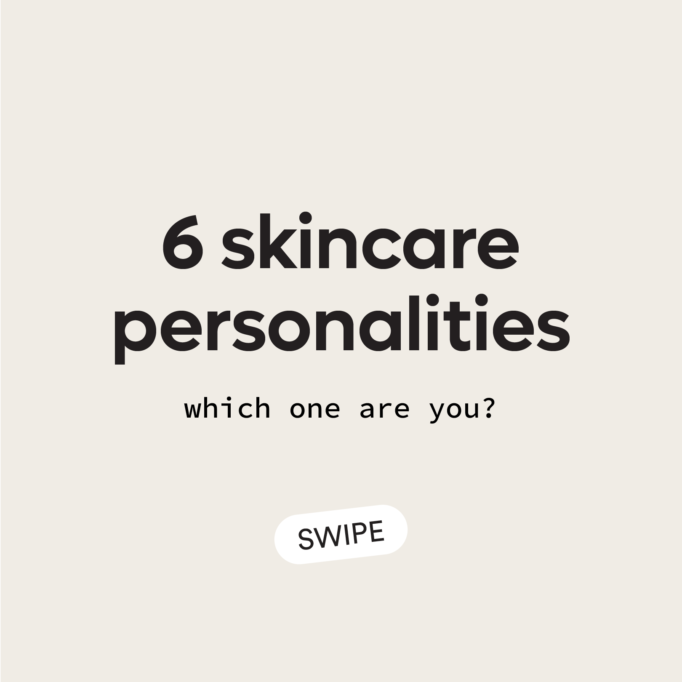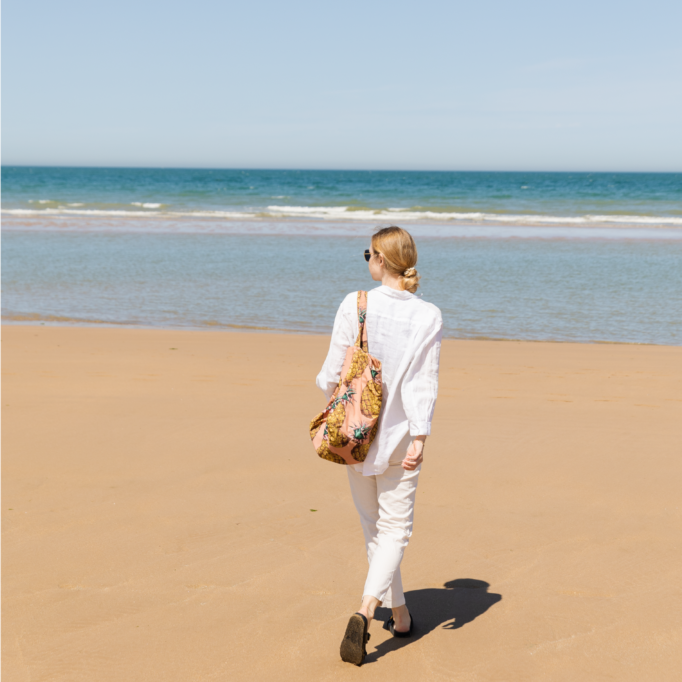Hide!
Just kidding!
I had severely dehydrated skin. But how?
The answer is pretty simple. I cleansed the wrong way for the longest time. As a result I was left with skin that was oily AND flaky and shiny AF. I couldn’t keep up with my overflowing sebum, and an hour after cleansing my skin would turn into a shiny disco ball.
I wish I was exaggerating…To paint a vivid picture for you:
I always took a piece of toilet paper, or a kleenex with me when I left the house, and not for my runny nose. I had to blot my face – all the time!
Everything looked like an oil-blotting sheet to me: kleenex, napkins, toilet-seat covers, t-shirts…
I avoided flash photography, because I would stand out in photos…In a bad way.
I had a preference for dimly lit rooms, because fluorescent lighting turned by forehead into a mirror.
I had to forget strobing and highlighting, because my face was doing that already…
I visited the washroom way more than the average girl. And not to do cocaine, but to BLOT and make sure my makeup didn’t crease.
Products labelled “matte” turned oily on my face.
I didn’t let anybody touch my face because they’d need to wash their hands with soap to get the oil off. #humiliating
I tried to see my shine as a glow…
The only good thing about having a shiny, ‘sebummy’ face is that it protects the skin from aging. Score!
As an acne-sufferer, we are taught to almost compulsively clean our faces and be afraid of extra sebum.
So that’s what I did. I cleansed, and cleansed…Sometimes even three times a day. And my skin got dryer, angrier, and SHINIER as a result.
Conflicting information about cleansing is probably driving you and your skin crazy too. But I knew there had to be solid logic and research behind the need to cleanse, and you can read more about it below.
Why You Need Sebum
Your face produces sebum, and that’s a good thing. The right amount of sebum will keep your skin plump and vibrant, and will protect your skin from the elements and bacteria. Sebum makes your skin soft and pliable, which makes it more resilient.
Did you know that skyscrapers actually sway with the wind?
If buildings are made flexible to stand up to the elements, then you might imagine that flexible skin has a definite advantage over brittle and inflexible skin, and for this you absolutely need sebum.
Too much sebum can be problematic though, because that’s when you’re likely to run into cloggage as the sebum overwhelms the pore…Not enough sebum, and you end up with dry, flaky skin that can also turn into clogagge as the dry skin cells overwhelm the pore.
It’s all about striking a balance…
How Sebum Protects You
The beautiful sebum that covers our faces is actually there for a reason. It’s normally around 4.5-6.2 on the PH scale which means that sebum is acidic.
This is good for you because your blood is alkaline, and bacteria love alkaline! When bacteria try to make your skin its home, the acidic environment protects you. But if somehow the bacterium can get through your skin to your blood, it will have a hard time surviving in the transition from the acidic environment of your skin to the alkaline environment of your blood.
Now we run into trouble when we strip our skin of ALL the sebum by using harsh/alkaline cleansers. They actually raise your skin’s PH over time, making it increasing more difficult for your skin to fight off intruders.
Did you know that p.acnes bacteria GROWS on alkaline skin? Researchers tested acidic and alkaline cleansers on participants and found that p.acnes multiplied with the alkaline cleanser, but died off with the acidic one.
What To Do?
1. Cleanse Less
Wash your face with water in the AM, and leave some protective sebum on your skin. It’s okay, because the only stuff that’s on your face first thing in the morning is sebum, dead skin cells, and maybe some hair oils/product from your pillow.
Use a cleanser to cleanse at night. Be especially thorough if you wore a face full of makeup that day. Get every little bit of makeup off, but please do it gently.
Washing my face with water in the morning, and paying close attention to cleanse thoroughly at night was a game-changer for me and my skin. My skin got softer, clearer, and the flakes disappeared.
These results couldn’t have happened without steps 2 and 3…
2. Exfoliate Regularly
I’m a HUGE believer in exfoliation.
Skin turnover is the coolest thing ever and can make your skin glowy and fantastic!
You gotta exfoliate even if you have acne, or I’d argue, especially if you have acne to keep your pores open. I recommend manually exfoliating about 1-3 times a week. You can do it super gently with a wash cloth, or more aggressively with a scrub.
Just for the love of God, don’t use the St.Ives Apricot Scrub. It’s way too harsh for human skin…If you have an extra bottle of it lying around, maybe use it on the soles of your feet. I don’t believe in rough scrubs, and I shudder at the thought of anyone using them on their delicate faces.
Overexfoliation is real, and I feel like I should mention it just in case you get too excited and decide to rub your skin raw. Raw, red skin is a sign that you’ve been exfoliating too hard or too often. It leads to even more dehydrated and oily skin. You can overexfoliate with a rough scrub, just as you can overexfoliate with a chemical peel.
Start slowly, and take it easy. Do it with love.
Learn more about exfoliation here.
3. Moisturize Like A Pro
I explain all the ingredients and nuances of moisturizing in this article. Give it a read if you want to know WHY you’re moisturizing in the first place.
When you cleanse less, and exfoliate regularly, your face will become better at absorbing and retaining moisture. It won’t be stripped, so it won’t need a ton of product.
I recommend ALWAYS applying moisture to a damp face. I like hydrating sprays or thermal water for this. Then apply thin layer of a serum or moisturizer (or both the way I do).
Other people will tell you to use Jojoba or Argan Oil on your dehydrated face…But I won’t be so cruel. Dehydrated skin lacks water, not oil. You’re already producing enough sebum, why would you put more on?
Applying oil to dehydrated skin can actually make it more dehydrated…If the skin lacks water, applying oils will not give it more water. In fact, applying oils to dehydrated skin will keep the water out, not in.
I tried moisturizing with oil, and it didn’t help me. This is an understatement.
Side note: When testing products know the difference between purging and reacting.
Final Thoughts
I’ve been at a place where I wanted to banish every ounce of sebum on my face, but I was wrong. Hopefully you can avoid making the same mistakes as I did!
I’m super excited because just got my hands on some PH strips. I’ll be testing all my favourite cleansers to see if they’re really suitable for my skin or if I should throw them out!
Take a moment to tell me which cleansers you use in the comments below, so that I can test them for you 😃
Love,
Olena
P.S. I’ve shared my best 28 hacks for clear skin in my 28 Days Of Clear Skin video series. You can sign up to get every single hack in your inbox here!























